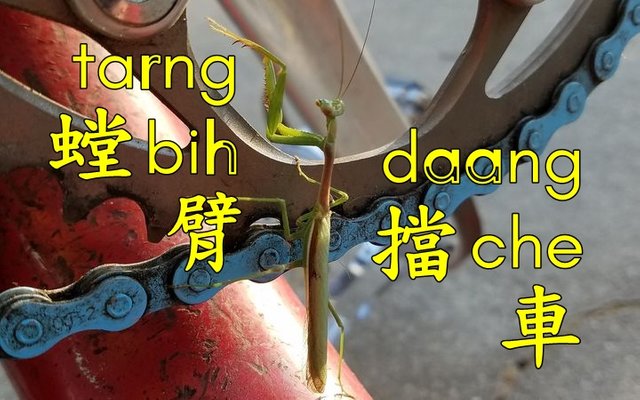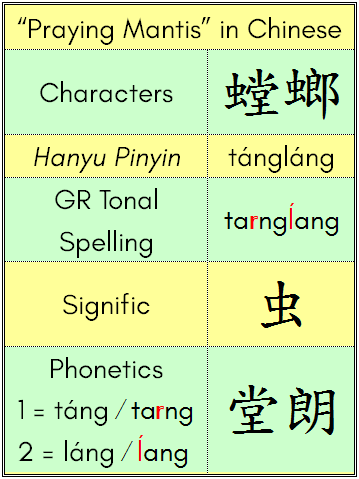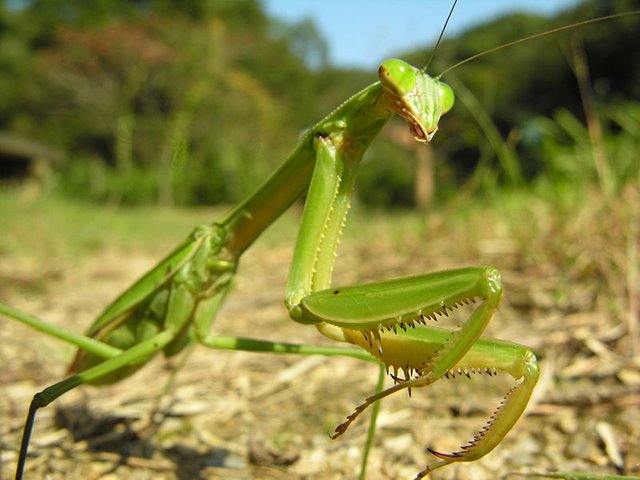Tarng Bih Daang Che “A praying mantis blocking a cart with its arms” 螳臂擋車

"Attempting to overcome an overwhelming challenge," a 2000+-year-old story from Zhuangzi: 螳臂擋車 táng bì dǎng chē / tarng bih daang che “A praying mantis blocking a cart with its arms”
One day, when Lord Zhuang / Juang of the state of Qi / Chyi was heading into the mountains to go hunting, he noticed a small green insect angrily raising its arms as if to do battle with the cart wheel.
This piqued the lord’s curiosity, so he asked his driver “What manner of insect is this?”
The driver looked at him and replied: “This is a praying mantis. This insect doesn’t advance and doesn’t retreat. It is not aware of its lack of strength and that its enemy is more powerful.”
Full of admiration, the lord sighed: “If only this were a human. He would become an invincible warrior!” He then ordered his driver to veer to the side and let the praying mantis be.
[@wentong-shyhae's translation: https://en.wikipedia.org/wiki/Zhuangzi_(book)
Nowadays, however, the four-character expression 螳臂擋車 is used in a negative sense to refer to another person (not oneself) who bites off more than he can chew (foolishly attempts to overcome an overwhelming challenge).
In Chinese, the praying mantis is referred to as 螳螂 tángláng / tarnglang, a two-character compound.
Both characters are semanto-phonetic compounds. The left half (虫) of these two characters is a signific (meaningful element of a Chinese character), an abbreviated form of 蟲 (insect), and the right hand portions 堂 and 朗 are phonetics (pronunciation hints), which provide a reminder of the pronunciation of each character táng / tarng and láng / lang (the meaning of these two components is irrelevant: they are used merely for their sound).

Here is a real life example of a praying mantis challenging a vehicle that happened recently in Taiwan:
The driver was not a member of the nobility, but he pried the brave insect off his wheel and let it go on its way ;-)
When seen from close up, 中華大刀螳 zhōnghuá dàdāotáng / jonghwa dahdautarng "the [literally] Chinese Sword Mantis" (scientific name: Tenodera aridifolia) is indeed quite fearsome.

[Tenodera_aridifolia_DSCN9675, CC--BY-SA Yasunori Koide]
Notice its powerful "swords"!
Female praying mantises have a nasty habit: in 25% of cases (more in the laboratory), they bite the male's head off while (or after) copulating. After she finishes her procreative duties, she proceeds to eat the rest of the corpse.
Brr! I wish I had known this before I met my ex-wife ;-)
A real-life case in France of a woman nicknamed "the praying mantis" (Simone Weber):
This Steemit post is adopted from a posting I made a few hours ago on Quora: